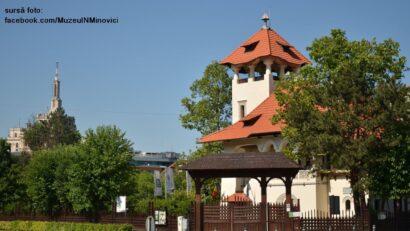The Ladino Language
One of the languages specific to both South-Eastern Europe and the Middle East, which contributed to the creation of a common multicultural space, was the Ladino language, a language spoken by the Sephardic Jews.

Steliu Lambru, 14.09.2025, 14:00
Romania shares with the other countries in the region this heritage that the Sephardic Jews brought from Spain, but which today only exists in documents. The city of the Ladino language in the Balkans was, until the Second World War, Thessaloniki, where the Jews formed a majority.
Felicia Waldman is a professor of Jewish history at the University of Bucharest. She has written about the Ladino language and culture and has shown how it underwent transformations when its speakers arrived in Romania. A decisive influence on the evolution of the Ladino language was the emergence of the modern Romanian state: “Until the 19th century, there was both Ladino culture and Ladino language. The Sephardic religious cult is in Ladino. So as long as there were synagogues, until 1987, as long as Cahal Cicu existed, the ritual was in Ladino, so the language was still spoken. But starting from the 19th century, even Sephardic families began to use French as an international language. We have, for example, correspondence from Sephardic families in Bucharest, which is in French. There is a word or an expression in Ladino there, but the correspondence is in French. Schools were also in Ladino until the 19th century. From the 19th century, they began to be in Romanian because the Sephardic were interested in them being Israeli-Romanian schools, so that the children could integrate. So from the mid-19th century, there were schools with the classes in Romanian, where the children were also learning Ladino, but classes were generally taught in Romanian. So the Ladino language is learned, but it is no longer the only language of the Sephardim.”
For a language to exist, intellectuals, journalism and a book market are needed, not just a school. The Sephardic population had at least two intellectuals, one who can be claimed by Romania, Bulgaria and Turkey, the other by Bulgaria, Serbia, Romania, Uruguay and Argentina. The first was Haim Bejarano (1846-1931). Born in Bulgaria and arriving in Romania after the Romanian War of Independence of 1877-1878, he was appointed rabbi and got involved in all the important projects of the Sephardic community in Bucharest. In 1910 he left for Turkey to be the rabbi of the Jews of Edirne. The second, Sabetai Djaen (1883-1947), was also born in Bulgaria and after the First World War, in 1921, he was appointed chief rabbi of the Sephardic communities in Romania. Felicia Waldman: “There is no press, there is only one newspaper in Ladino in Romania, El Luziero de la Pasiencia, which was printed for only one year in Craiova. Nothing was published in Bucharest, but in Craiova this magazine was printed, which worked very little and from which, practically, a few issues appeared and that was about it. But we have personalities like Haim Bejarano or Sabetai Djaen who wrote books about the Ladino language used in Romania and in the Balkan area in general. They collected Sephardic folklore, they collected Sephardic theatre, theatre in the sense of Jewish holidays where re-enactments of the respective holiday are made. For Purim and Pesach, various shows were also made and all of this was recorded by these two great collectors of Sephardic culture, of Ladino culture, whose merits are recognized. For example, Djaen was decorated by the president of Spain, Alcalá-Zamora, for his contribution to the promotion of Hispanicism in the Balkans. He promoted the Spanish language, not only Ladino but also standard Spanish, he tried to convince the world of the usefulness of learning Spanish, not only of using Ladino.”
Felicia Waldman told us what the situation is for Ladino speakers today in Romania and throughout Southeast Europe and the Middle East: “Today there is no Ladino speaker in Romania, the last one died before the covid pandemic, Mihail Café. But there are still Ladino speakers in Greece, Bulgaria, Turkey, Serbia and that’s about it. In Bulgaria, the majority of Jews are Sephardic and speak Ladino. In Turkey, the majority are Sephardic, but there are also many Ashkenazi. Greece is divided into three: there are Sephardic, there are Ashkenazi and there are Romaniots, and there are still Romaniots. And in Serbia, just like in the rest of the Balkans, there are more Sephardic, there are a few Ashkenazi. In Israel, Ladino is almost not used at all. In general, in Israel the vast majority of Sephardic Jews are actually those who left Spain in 1492, but arrived in the Ottoman Empire in the Arab zone. Basically, when they left for the Ottoman Empire, they emigrated to what are today Syria and, Lebanon. When they arrived in Israel, after 1948, after being expelled from the Arab states, they came to Israel speaking Judeo-Arabic, not Ladino.”
The Ladino language is the bearer of a Neo-Latin Jewish culture from an area of distribution that includes Romania. Even though Ladino is rarely spoken today, it is one of the elements on which modern Hebrew was developed. (EE)





























